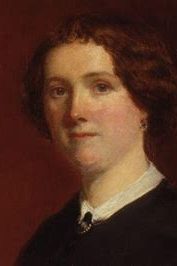William Frederic Tillotson’s entrepreneurial flair included an ability to build relationships that were invaluable to the rapid expansion of his growing publishing empire.
A key relationship for Tillotson’s Fiction Bureau, and for Tillotson personally, was with John Maxwell, partner and eventual husband of Mary Elizabeth Braddon, a leading sensation novelist of the period. Maxwell, who had been publishing magazines and periodicals since the late eighteen-fifties, was Braddon’s manager, publisher and agent. Although Tillotson’s Bolton Weekly Journal had been serialising novels since its inception in 1871, in 1873 Maxwell and Tillotson entered an agreement in which Braddon’s next novel, Taken at the Flood, would be published as a book by Maxwell and syndicated by Tillotson to a number of provincial titles (including Tillotson’s Bolton Weekly Journal) in serialised form. This was the beginning of the Tillotson Fiction Bureau. Until their relationship dissolved in acrimony in 1887, Braddon’s serialised novels were a mainstay of both the Bolton Weekly Journal and the syndication bureau.

Tillotson used Braddon’s popularity to expand the Weekly Journal format into townships neighbouring Bolton, and Tillotson appears to have benefitted in other ways from his arrangement with Maxwell. As Graham Law (an expert on Tillotson’s and other publishing syndicates) suggests, it may well have been Maxwell who first approached Tillotson with the idea of syndication. Maxwell had arranged the serialisation of a number of Braddon’s books directly with provincial newspapers long before his agreement with Tillotson and he had contacts throughout the industry. Many of Tillotson’s subsequent authors were protégés of Maxwell, including Dora Russell, B.L. Farjeon, Frederick Talbot and Florence Marryat. What Maxwell brought to Tillotson was credibility in the literary world of London. Law also points out that Maxwell had been selling Braddon’s serialisation rights to Australian newspapers directly (and continued to do so until this too was handed over to Tillotson in 1880). It seems likely that he provided some introduction to Tillotson on entering the Australian market. In 1886 he was advising Tillotson of the implications of the Berne Convention, signed that year, covering international copyright law. At the peak of their relationship, Tillotson was a frequent visitor to Maxwell’s London home and Maxwell and Braddon occasionally came to Tillotson’s Bolton home, Westgate. Mary Tillotson, William’s wife and the sister of the future Viscount Leverhulme, was an avid reader of Braddon’s fiction.
Although the correspondence between Tillotson and Maxwell in the early years of their friendship has been lost, from 1879 onwards there is a considerable collection. Through the letters, we gain a sense of Maxwell’s personality. He was constantly pushing for better terms for Braddon and could be irascible when he felt that Tillotson was overstepping his rights. The final break came in 1887, only twelve months before Tillotson died prematurely from pneumonia at the age of 44. As Tillotson’s list of published authors grew, and Braddon’s popularity began to wane, Maxwell was told that Braddon’s latest novel, Mohawks, would have to wait at least a year before the Bolton Weekly Journal could consider it for publication. Following disputes with Maxwell’s sons, Tillotson severed all business connections with Maxwell and the friendship came to an end.
Bibliography
Frith, William Powell. (1865) Mary Elizabeth Braddon. [Painting] Available at: <http://www.isfdb.org/wiki/images/9/93/Mary_Elizabeth_Maxwell.jpg> [Accessed 10 June 2021].
Hilliard, Christopher. (2009) The Provincial Press and the Imperial Traffic in Fiction, 1870s-1930s. Journal of British Studies. 48(3), pp.653-673.
Jones, Aled. (1984) Tillotson’s Fiction Bureau: The Manchester Manuscripts. Victorian Periodicals Review. 17(1), pp.43-49.
Law, Graham. (1999) Before Tillotsons: Novels in British Provincial Newspapers, 1855-1873. Victorian Periodicals Review, 32(1) (Spring), pp.43-79.
Law, Graham. (2000) Serializing Fiction in the Victorian Press. Houndmills: Palgrave.










